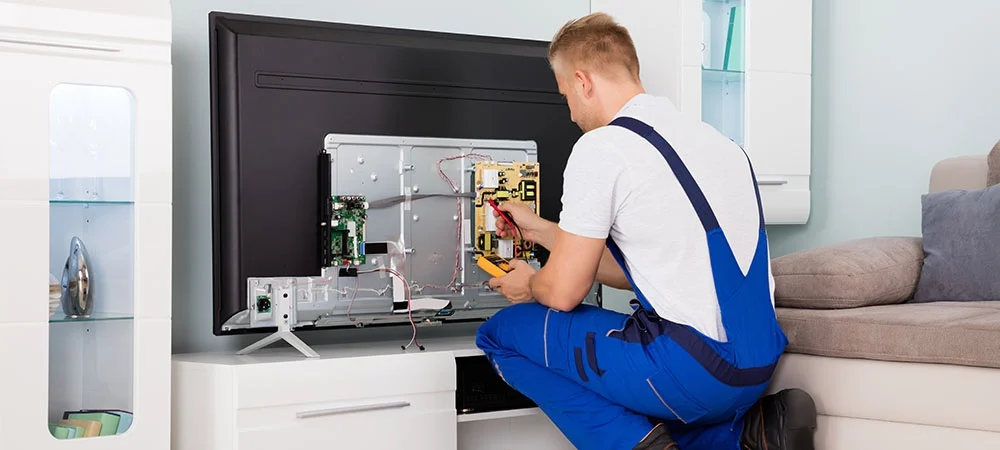For homeowners and enthusiasts of sustainable living, the decision to fix or replace a broken appliance is more than just a budgetary concern; it’s an environmental one. Every year, millions of household appliances end up in landfills, contributing to global waste and resource depletion. Alternatively, repairs and maintenance not only extend the lifespan of appliances but can also significantly reduce your carbon footprint.
This article explores the environmental impact of fixing versus replacing appliances, helping you make more sustainable choices for your home.
Why Appliances Matter in Sustainable Living
Household appliances—from refrigerators and dishwashers to air conditioners and washing machines—are integral to modern living. However, they also account for a substantial portion of a household’s energy consumption and carbon emissions.
When these appliances are sent to landfills, they don’t just occupy space; they release harmful materials like heavy metals, ozone-depleting substances, and plastics into the environment. Additionally, producing new appliances requires significant energy and raw materials, including steel, aluminum, and copper, further taxing the planet.
Opting for repairs over replacements can be a small but crucial step toward minimizing waste and conserving resources.
The Environmental Impact of Replacing Appliances
1. Carbon Footprint of Production
Manufacturing a new appliance involves extracting raw materials, processing them, and assembling the final product. Each of these steps contributes to greenhouse gas emissions. For example:
- Producing a refrigerator generates an estimated 300kg of CO2 emissions.
- A new air conditioning unit can result in significant emissions during both production and transport.
When you buy a replacement, you’re indirectly contributing to this production cycle.
2. Waste Management Concerns
The world generates over 50 million metric tons of e-waste every year, and only a small percentage gets recycled properly. Old appliances often contain components that are difficult to recycle, meaning much of the material goes to waste, adding to landfill issues.
3. Energy Efficiency Debate
While it’s true that newer appliances often come with better energy ratings, the environmental cost of producing and disposing of an old appliance often outweighs the energy savings of a new one over its first few years of use.
The Environmental Impact of Repairing Appliances
1. Life Extension Reduces Waste
By repairing an appliance, you are essentially giving it a new lease on life, keeping it away from landfills for years to come. For example, investing in proper AC repair like in Ogden can ensure that your system runs efficiently through multiple seasons without requiring a full replacement.
2. Reducing Demand for Raw Materials
Every repair you make reduces the demand for raw materials needed to produce new appliances. It’s a way to directly contribute to resource conservation.
3. Encouraging a Circular Economy
Repairing appliances promotes the idea of a circular economy, where products are reused, refurbished, or recycled rather than discarded. This helps lower the overall environmental cost and supports sustainability-focused industries.
What to Consider When Deciding to Repair or Replace
1. Age of the Appliance
While repairing is often the greener choice, there are exceptions. If the appliance is over 10-15 years old, it may lack the energy efficiency of modern models. Do the math to determine if energy savings with a new appliance outweigh the benefits of repair.
2. Severity of the Issue
Some problems, like a broken compressor in a refrigerator or a cracked heat exchanger in a furnace, may be prohibitively expensive or inefficient to fix. For minor issues like thermostat failures or electrical glitches, repair is typically more cost-effective and sustainable.
3. Resource Efficiency
Consider the efficiency ratings of both the old and new appliances. For example, if your refrigerator guzzles energy at twice the rate of newer Energy Star models, upgrading could offer both environmental and financial benefits in the long term.
4. Availability of Parts
For older models, replacement parts may no longer be available or may be exorbitantly priced. On the flip side, choosing repair-friendly brands can facilitate fixing your appliance well into its advanced years.
Practical Tips for Eco-Conscious Appliance Maintenance
To reduce your carbon footprint and extend the lifespan of your appliances, consider the following tips:
- Regular Maintenance: Clean filters, lubricate moving parts, and inspect your appliances periodically. This simple step can prevent numerous issues before they escalate.
- Energy-Efficient Settings: Use your appliance’s eco-mode settings whenever possible.
- Recycle Responsibly: When it’s time to replace, ensure your old appliance is properly recycled. Many local governments and companies offer take-back programs.
- Invest in Quality Repairs: Work with skilled technicians who can ensure your appliance runs efficiently for years to come.
The Role of Community and Local Repair Services
Supporting local repair businesses not only boosts the economy but also helps reduce the environmental footprint of transporting appliances for servicing. If you’re in Utah, for instance, reputable services like those offering AC repair in Ogden focus on quality repairs that extend the lifespan of your appliances. By building a relationship with these professionals, you can also get expert advice on when it’s best to repair or replace an appliance.
In conclusion, opting for repairs over replacements is a practical and eco-friendly choice for sustainable living. Consider the environmental impact and weigh your options carefully before making a decision. Remember, small steps can add up to make a big difference in protecting our planet’s resources for future generations.
